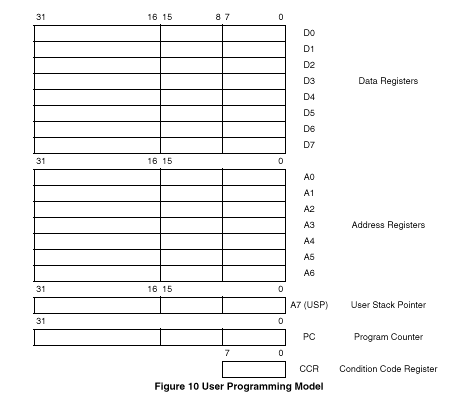
Digital & Embedded Systems
MC68332 Machine Language
The machine language instructions for the CPU32 consist of one or more 16-bit words in memory. The first word is the operation word, which contains the operation code (op-code) as well as the size or length and the addressing modes for any operands, if necessary. For most instructions, the op-code is contained in bits 12 through 15 of the first word. The various combinations of these bits yield 16 op-codes shown in the table below.
Bit Manipulation / MOVEP / Immediate Move Byte Move Long Move Word Miscellaneous ADDQ / SUBQ / Scc / DBcc / TRAPcc Bcc / BSR / BRA MOVEQ OR / DIV / SBCD SUB / SUBX (Unassigned, Reserved) CMP / EOR AND / MUL / ABCD / EXG ADD / ADDX Shift / Rotate / Bit Field Coprocessor Operation An important difference betweeen the CPU designed for laboratories one and two and the CPU32 is that the programmer does use the op-codes to program the CPU. The op-codes are stored as microcode in the ROM of the CPU32 and a special program, called an assembler, converts code that the programmer writes (assembly instructions) to sequences of microcode.
Note: The information about the MC68332 was taken from 'The Motorola MC68332 Microcontroller - Product Design, Assembly Language Programming, and Interfacing' by Thomas L. Harman, 1991.
MC68332 Register Set
The MC68332 has the following general purpose registers:
- Program counter - holds the address of next instruction to be fetched from memory.
- Condition code register - contains bits that indicate the results of arithmetic or similar operations.
- Eight (8) data registers
- Seven (7) address registers
The following diagram, from the CPU32 data sheet, illustrates the arrangement of the registers.
